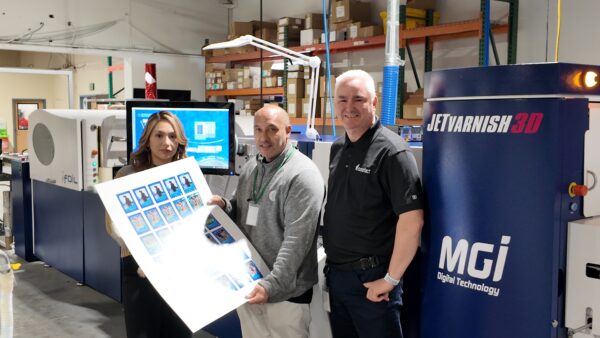Your managed IT business is starting to take off. Now what?
What does it take to win at managed IT?
That’s the million-dollar question and one dealers of all sizes have struggled with at one time or another.
But we aren’t going to offer tips as to how to get started in managed IT. Instead, let’s start with the premise that you are already offering managed IT services and holding your own. Great. So, what’s next? Where do you go from here? And what should you do to remain relevant to your customers?
Personnel Best
Todd Croteau, president of Konica Minolta’s All Covered, suggests dealers never take their sights off their organization’s staffing needs around managed IT.
“To attract and retain talent is going to be an ever-increasing challenge,” he said.
As managed IT expands beyond the basics of managing networks and help-desk support, it will become increasingly difficult to find talent, particularly if you’re planning on expanding your offerings.
Dealers should also brace themselves for the realities of a tight labor market where talent, especially IT personnel, is constantly being poached. That can pose problems for a dealership with a small but growing managed IT business in the process of building out its IT services team.
“A practice can’t be based on one or two people,” emphasized Croteau. “If I’m doing managed IT, what can I deliver to my customers no matter what? The technology of the future is going to be around security and guess what, it’s going to get tougher to find security people.”
Stepping on the Scale
Scaling the business is also critical to success, according to Michael Amiri, senior director, dealer services, Continuum. He’s seen dealers build a managed IT business, and then, once it finally starts turning a profit three to five years later, they can’t scale it to keep up with growth. Incidentally, scaling the business circles back to finding talent and adding additional IT offerings.
“You’re only as good as the people that you have at your disposal,” opined Amiri. “They’re really expensive in the IT world and the good ones are hard to find.”
That challenge might be alleviated by partnering with a third-party managed IT services provider such as All Covered, GreatAmerica Financial Services’ Collabrance, or Continuum to handle all or certain elements of one’s growing managed IT operations. However, that isn’t the only option to achieve scale. Dealers can acquire, or continue to do it themselves, if that’s their preference.
Pick Your Battles Wisely
“Managed IT, when you do it in a managed form, is really a standardization business, not a technology business,” observed David Pohlman, president of GreatAmerica Financial Services’ Collabrance division. He’s now seeing that dealers approach managed IT with a different mindset gain a lot of traction compared to the first time they attempted to get into the business. Part of the problem before was taking on virtually every account that was interested in doing business with them and trying to support everything within that customer’s organization.
“They took the approach they did in their primary business, which is, generally speaking, every customer is a good customer and whatever kind of IT they have, we’ll do our best to support it,” said Pohlman. “That mindset just doesn’t scale in managed IT.”
“Not all great imaging customers are great IT customers,” affirmed Continuum’s Amiri.
Trying to do too much and attempting to figure things out in the process can discourage sales reps from selling managed IT because they don’t want to mess up a good imaging account. Plus, servicing an array of technology configurations at different accounts can be a time-consuming exercise.
Pohlman recommends a consistent approach to the tech stack. That means if the dealer is accountable for managing a customer’s IT operations, the customer must allow the dealer to put standards in place for key IT areas such as firewalls and backup.
“There’s a little bit more flexibility around desktop, hardware, etc.,” noted Pohlman. “But when it comes to security and backup, you can’t do a good job if you’re trying to support a wide array of things.”
Whether a dealer is engaging with a partner or doing it on their own, Pohlman said it’s helpful to understand that having a standardized tech stack and a consistency of processes is the most prudent approach for providing the customer with the proper level of support and the best managed IT experience. This approach helps build confidence within the dealership around its managed IT offerings, which is key for encouraging sales reps to sell it.
A Sense of Security
Anyone looking to grow a managed IT business can’t avoid the security component, which Amiri said represents a $2 trillion opportunity compared to a $350 billion opportunity in traditional IT services.
“It’s the next great opportunity to ensure the relevancy of your IT services deliverables, and it perfectly aligns with MFP security initiatives,” he said.
It’s also an excellent talk track for sales reps to drive new sales conversations.
The easy targets for security offerings are SMBs with 10 to 200 users. These customers tend to be easy targets for hackers opposed to enterprise customers who have stronger security protocols in place, said Amiri.
Beyond the Help Desk
Expanding a managed IT business beyond the basics and beyond security can include application development, mobility, migration to the cloud, SharePoint expertise, workflow consulting, and voice and telephony. All Covered’s Croteau considers voice and telephony a safe place for a dealer to start this expansion because the timing, in his view, is perfect.
“Even though many people have been using cloud-based VoIP at home for a long time, businesses haven’t really until recently so there’s a huge migration to cloud-based voice that is happening,” said Croteau.
The cloud is another area where a dealer looking to expand their managed IT can find a viable growth opportunity.
“Cloud simply means the device is just not on premise at the customer location,” said Amiri. “There’s still a physical server somewhere that needs to be managed and supported but how you deliver that is quite different than you would in a traditional on-premise environment.”
Cloud services are not a good fit for every customer.
“If you’re a small organization, quite honestly, cloud might not be for you as you’re contemplating your next hardware refresh,” said Amiri. “If you’re a doctor’s office that’s worried about security or an architectural firm with huge processing-power needs, those organizations will likely never be in the cloud.”
Big Mac Attack
Further food for thought, courtesy of Croteau, is the younger generations of workers who are taking advantage of the BYOD trend. It’s no longer Windows-based laptops that they are bringing into the workplace. More are married to their Macs or other Apple devices. That’s why All Covered acquired a Mac help-desk company, MacProfessionals, Inc., last year. Can a dealer easily find a Mac person?
“Maybe,” said Croteau, “but what happens if that guy is on vacation or quits?”
In this instance, partnering with an organization like an All Covered can allow a dealership to prepare for this workplace shift and deliver a way to keep up with a fast-changing industry.
A Vertical Managed IT Approach
Keying in on different vertical markets is another consideration for a growing managed IT business, but be forewarned, that often requires specialized knowledge about those markets. Amiri identified five main verticals where IT is mission critical””legal, healthcare, finance, construction, non-profits. He said these verticals are finding it increasingly difficult to manage their IT operations internally Nearly half of All Covered’s business is focused on four verticals””healthcare, legal, education, and finance. The key to selling to those verticals, according to Croteau, is understanding how they operate, what innovations can be applied to them, and what additional value you can bring to them not just on the IT side of the business, but also on the print side of the business. Incidentally, All Covered has a help desk just for lawyers, which is something that would be difficult for a dealer to do.
Contracts for a vertical account are often double the size of a horizontal customer, added Croteau.
For horizontal clients, Croteau suggested taking steps to educate those customers about the benefits of outsourcing managed IT, as well as IT-related issues by sponsoring forums and executive roundtables, and through top leadership collaboration within their customers’ organizations. This adds value and repositions the managed IT provider as a thought leader rather than just a supplier.
Build to Grow or Sell?
A successful managed IT offering provides a dealership with another benefit, depending on one’s perspective. GreatAmerica’s Pohlman contends a dealer with a successful managed IT business is more attractive to private-equity firms because now they are more than just an office technology provider.
“It’s brought material value to their business because a managed IT company is valued substantially higher than an office-equipment business in terms of what the marketplace will pay today,” observed Pohlman. “That’s a subtle, but impactful difference.”
Access Related Content
Visit the www.thecannatareport.com. To become a subscriber, visit www.thecannatareport.com/register or contact cjcannata@cannatareport.com directly. Bulk subscription rates are also available.




